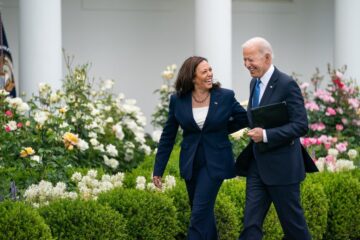Welcome back to Week 12 in my weekly reports analyzing the Covid-19 pandemic and its effects on the country, higher education and study abroad. From my first on April 17, we’ve come a long way. For those of you reading this on my blog, Off the Silk Road, I have also launched a newsletter, where these reports can be sent directly to your email each week. Click here to subscribe.
Last week, I looked at worsening data points from the pandemic in certain parts of the country as colleges continue to push forward with plans for an on-campus fall. This week, we will look at this new stage of the pandemic (as it becomes uncontrollable in some places) and see the first steps of some colleges reversing their fall reopening plans.
There’s a lot of material to go through (as per usual), so let’s get straight to it.
A national look
In many places of the country, this pandemic is a forest fire spiraling out of control. We have hit three days in a row with daily case counts nationwide of over 50,000. Just two states are showing a decrease in cases compared to last week: Rhode Island and Vermont. It’s not just that more people are testing positive — a look inside a Texas hospital shows that there is an agonizing waiting line for patients to be admitted. “The window is closing,” Secretary of Health and Human Services Alex Azar said on Good Morning America earlier in the week. We have one last chance as a country to quell this outbreak before the damage will be too great, and these next two weeks will be critical. We’re not just testing more, we’re transmitting more. As the CDC predicts 148,000 deaths by July 25, it still remains unseen what this influx in cases will do to the death count. The country is reeling from the aftermath of Memorial Day’s effects on viral spread and July 4th could be another disaster waiting to happen.
Andy Slavitt, former Administrator of the Centers for Medicare and Medicaid Services, outlines three possible scenarios for the next few months, estimating the percentages of their likelihood of happening.
- A national strategy (10%)
- A little religion and a little luck (40%)
- Let the virus loose (50%)
The WHO has warned that “the worse has yet to come” and Principal CDC Deputy Director Anne Schuchat has said that the U.S. has “way too much virus” to control nationwide. It is important to understand, however, that tools such as contact tracing, which really only work if contacts can be traced in three days or less, are impractical and impossible with such a high case count. This can no longer be considered a regional pandemic. We need a national strategy.
Looking back on six months since the first confirmed pneumonia case in Wuhan, China, it is hard for me to understand a single element that the U.S. was right about when it comes to the pandemic response. “It’s hard to name a success,” CNN’s chief medical correspondent Dr. Sanjay Gupta said. So what went wrong? Some people rose to the occasion, modifying their behaviors and making sacrifices for the good of the country. But others were impatient and became bored too quickly. A course correction is needed on a national level. But I don’t think it’s coming anytime soon.
Trump has failed at every chance at a national response. As key Republican lawmakers and even Fox News hosts are now advocating for wearing masks, he has still refused to do so. The president’s son’s girlfriend has just tested positive for the virus as he continues to hold public events that include thousands of people packed together, (the vast majority without masks) against his own task force’s guidelines, Trump’s event at Mount Rushmore attracted 7,000 people, with chairs actually zip-tied together, against social distancing protocols. Secret Service agents traveling with the vice president in Arizona have now been stuck in quarantine after many tested positive for the virus. The White House is expected to unveil a new strategy next week: learn to live with it. We’ve officially given up on a federal level. The U.S. is going in the wrong direction, as Dr. Anthony Fauci has warned that “I would not be surprised if we go up to 100,000 [cases] a day if this does not turn around.” No one area of the country is safe, as New York State (with cases slightly increasing) imposed travel advisories on travelers coming from 16 states. This is essentially a modern-day civil war, with areas of the country turning against each other. Could we see a change of the tide on mask wearing from the president? Probably not. This president cares more about dead pieces of metal symbolizing Confederate generals than living and sick Americans. It’s always one step forward, two steps back.
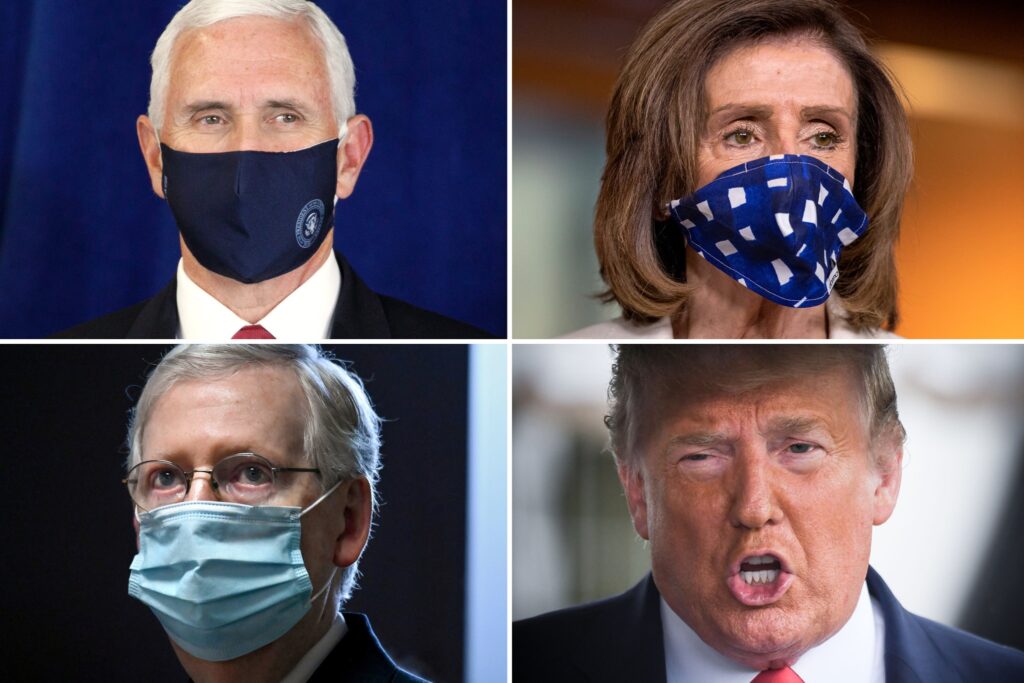
It’s not just Trump. Conservative media has repeatedly downplayed the severity of the virus, with many Americans seeing exaggeration, conspiracy theories and partisanship in the news related to the outbreak. Only 9% of Democrats trust Trump and his administration for accurate news, as seen in this chart. A unified and honest message across all agencies and media outlets is critical for a successful response.
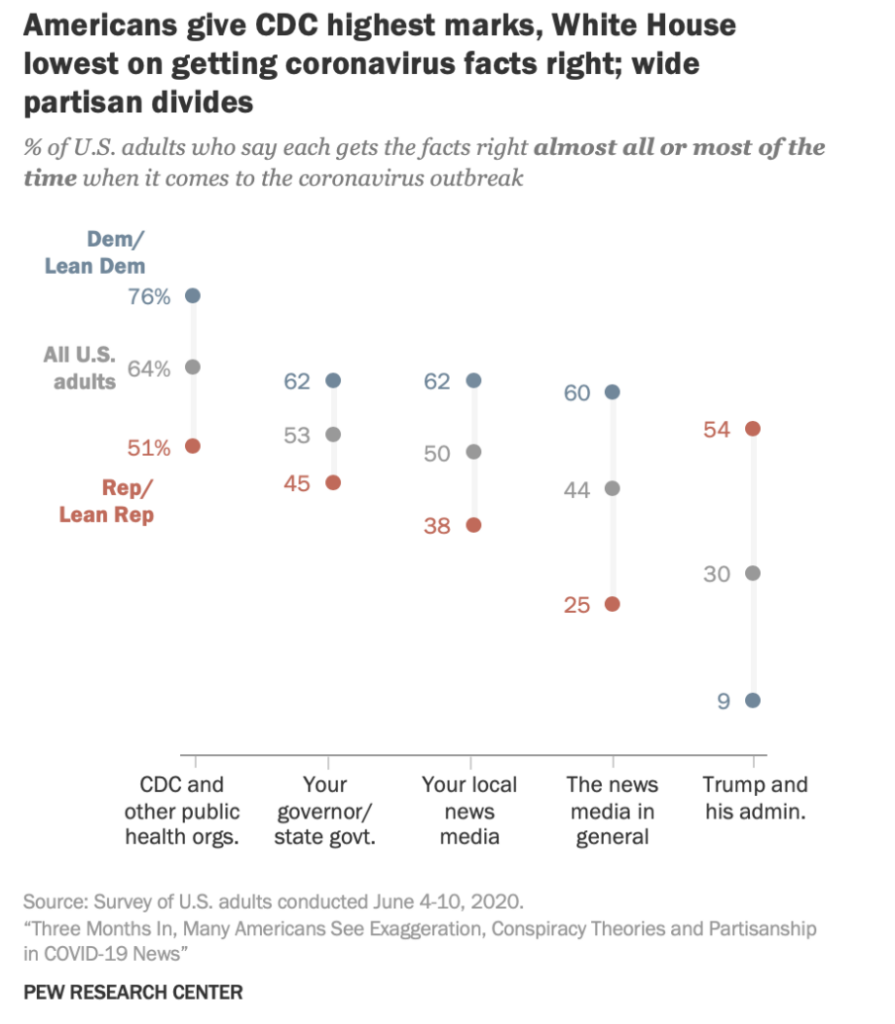
Earlier in the week, Democratic presidential presumptive nominee Joe Biden delivered a speech in Delaware, rebuking President Trump for his response. Claiming that “our wartime president has surrendered,” he has released a comprehensive plan to combat the virus, including paid sick leave, using the Defense Production Act more to produce critical supplies and increasing testing outreach into vulnerable populations, in addition to weekly reports on therapeutics and vaccines by the White House. The federal government at its peak had set up 43 testing sites across the country. For comparison, New York State has set up over 750.
We are beginning to see more and more dangers of reopening, as some states have rolled back or stopped reopening plans. Just because you can do something doesn’t mean you have to do it. Indoor dining in New Jersey has been temporarily suspended. Texas Governor Greg Abbott has signed an executive order requiring masks in public in most of the state (a clear reversal from previous actions) and California Governor Gavin Newsom has placed 75% of his state under a near lockdown. 38 MLB players have tested positive as return-to-play protocols have begun. Yet, there are some people who still do not believe in wearing masks and actively resist.
Let’s talk briefly about testing. A new NPR analysis with Harvard researchers shows testing for two purposes: mitigation and suppression. Mitigation involves testing symptomatic individuals, with a target test positivity rate of 10% or less. Suppression involves testing asymptomatic individuals in an attempt to bring test positivity below 3% and cases down to close to zero. Many states do not meet either targets. While we as a country are currently conducting less than 600,000 tests per day, we need 4.3 million tests a day as a goal for suppression. And yet some of our testing laboratories are already at capacity, which is why pooled testing is a possible solution. Pooled testing involves samples being combined in batches, enabling officials to test greater numbers at once. If a pool comes back negative, the entire sample is negative. If a pool comes back positive, researchers can retest individual samples. If test results are not returned within a day or so, it is impossible to contain many outbreaks.
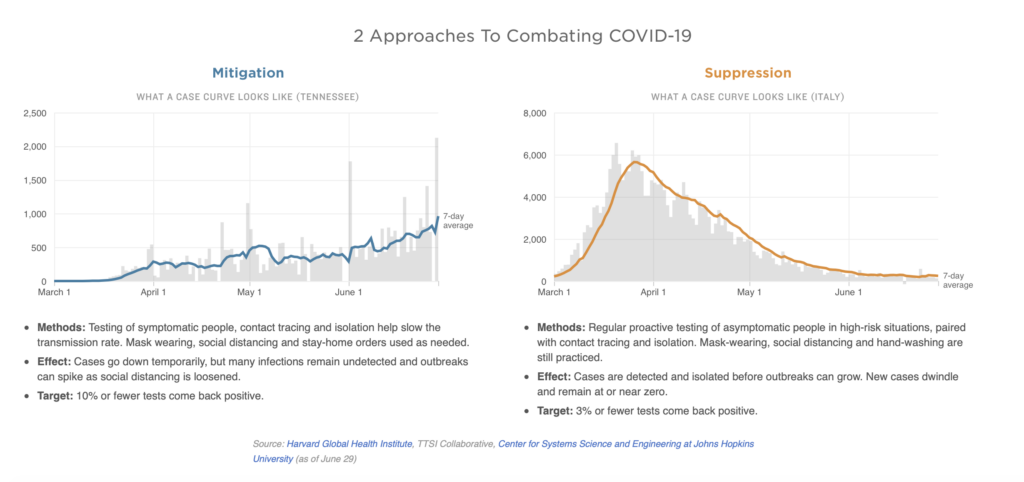
As the world was alerted this week of a swine flu strain in China that has “pandemic potential,” we need to quash the pandemic at hand with a hammer, not a switch. The numbers don’t lie. Americans are becoming more and more concerned about their local area’s healthcare situation and 65% say the situation is getting worse, according to Gallup polls.
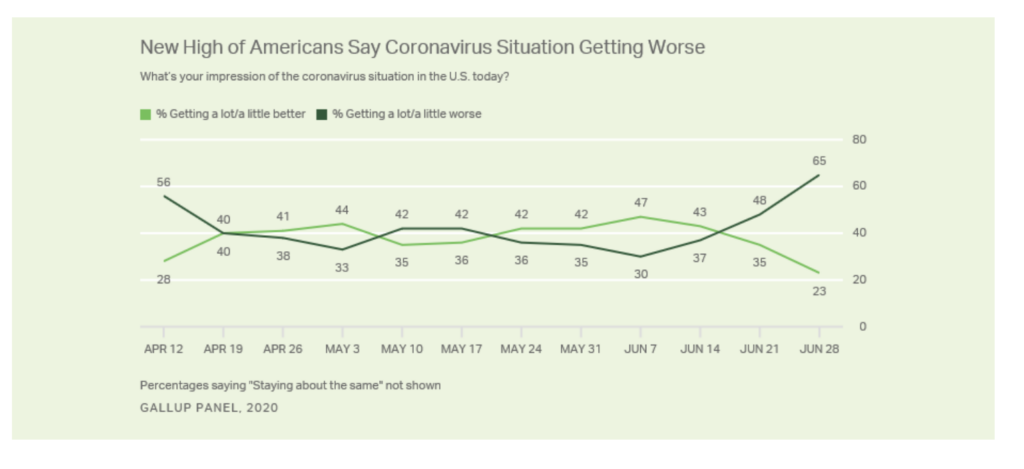
Effective contact tracing is a necessary step for suppression as well. A recent CDC study showed that only 46% of those who tested positive in a recent survey reported recent contact with a Covid-19 patient. This shows that there are still missing links in our contact tracing program.
As usual, we have seen more studies published and new pieces of information now available to help us better understand Covid-19. Let’s take a look at some of the highlights:
- A new mutation in the virus shows that it could be three to nine times more infectious, though does not seem to make people sicker.
- The death count is still being undercounted, according to a JAMA study of excess deaths.
- A woman who returned to China from the U.S. in March sparked an outbreak that ended up infecting at least 71 people. She was an asymptomatic carrier (remained completely asymptomatic) and tested negative after arriving. One elevator was linked to the outbreak.
- A CDC study of a correctional facility in Louisiana showed 45% of positives to be asymptomatic. Among the remaining 45 people who tested negative on Day 1, 16 (36%) tested positive on Day 4.
- We’ve learned more about the multisystem inflammatory syndrome in children (MIS-C).
- Two studies from Italy shows 42% asymptomatic infections in one community and 73% asymptomatic (of those under 60) in another.
As areas of the country continue to wrestle with the virus, states in the Northeast have opened their borders to each other. For example, Maine has loosened quarantine requirements on those coming from New York and New Jersey. This map shows a county-by-county risk analysis based on disease prevalence and spread.
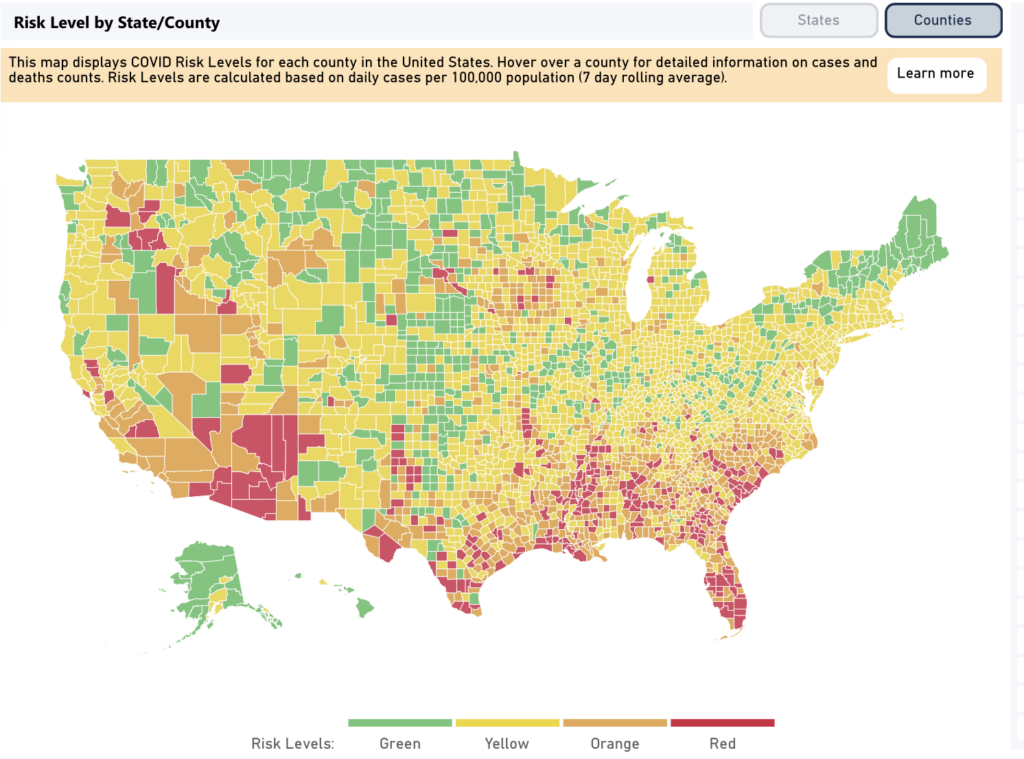
This is now the tale of two unions: the U.S. and the EU. As we celebrate Independence Day, where our constitution writes a “more perfect union,” the European Union seems to be more perfect than us, putting a ban on travelers originating from the United States. This ban, unlike the U.S. “ban” from China, is not based on citizenship, but rather country of origin. The U.S. is now a pariah state and is seen on the world stage as a failure in controlling the virus.
I’d like to finish the national discussion with a note on K-12 schools. In my view, the decision to open K-12 schools is completely different from higher education, mainly due to the residential component, increased risk-taking behaviors in college students and the close-contact nature of college campuses. This week, guidelines from the American Academy of Pediatrics have advocated for students to be in the classroom this fall, pointing to low risk of transmission between children and arguing that schools are essential drivers of the economy. America faces a difficult decision: open the bars now and have no school in the fall, or close the bars to have any shot at in-person K-12 this fall. I sincerely hope we will make the right decision.
The U.S. is seeing a shifting geography in cases. As Governor Cuomo shows the world what his state accomplished in the form of a mountain shaped like the curve that the state has flattened, young people in Alabama are holding parties that are potential vectors for viral spread. Whether or not these parties feature individuals deliberately infecting each other is irrelevant; they are still incredibly risky.
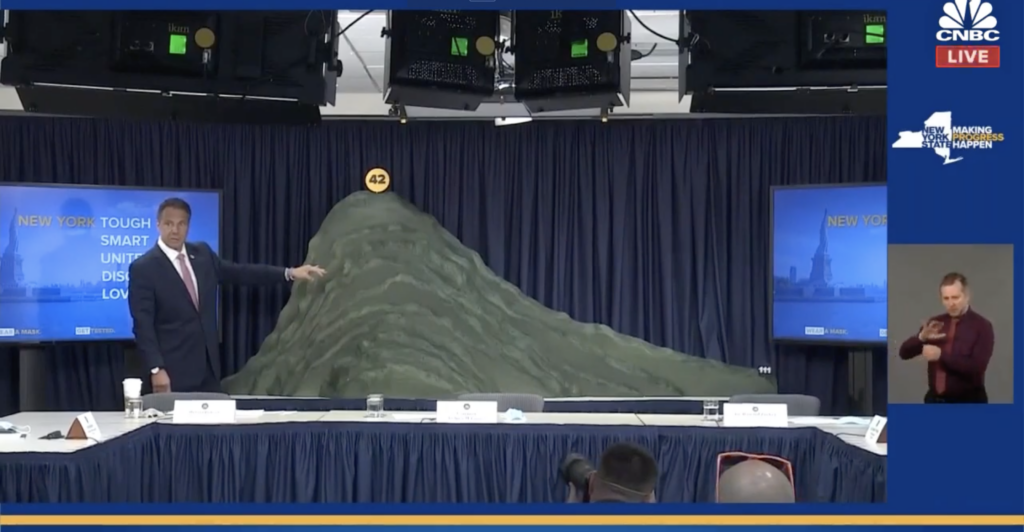
Having laid down the groundwork on the national scene, let’s take a look at the latest developments in higher ed.
Higher education
As July 1 has come and gone, we have seen more and more schools release fall plans pointing to an in-person reopening. Whether that necessarily means in-person instruction is another question. As Jeff Selingo writes, there are three big fault lines that are emerging:
- Face-to-Face vs. Online/Hybrid
- Faculty vs. Staff
- Money vs. Health
In many cases, money plays a huge factor in college reopening decisions. As biologist Carl Bergstrom notes, many colleges are under financial pressure and testing is expensive. The CDC released testing guidelines this week for colleges that does not recommend entry testing. While it is true that entry testing does not catch all possible cases, it is a tool that can be used to help control the infection rate before the semester starts. As my colleagues at the CC Covid-19 Reporting Project report, “guilt-free testing is very important” — we need to have enough tests for testing to become a normality of college life. In my conversations with Bergstrom, he estimates that testing twice per week (or even more frequently) would be a useful amount of surveillance testing to detect possible outbreaks.
Let’s take a look at some colleges’ plans that were released this week.
Williams College, the nation’s richest liberal arts college, intends to convene for an in-person semester with a 15% tuition reduction. Part of this lowering of fees arises from changes to key parts of the Williams experience, from the elimination of Winter Study for this academic year to reductions in extracurricular offerings and athletics, as reported by the Williams Record. Its NESCAC counterpart, Colby College, plans to conduct an aggressive testing campaign, running 85,000 tests in the opening weeks of the fall semester. This is around equal to the number of tests the state of Maine has run in the last three months. Amherst College has purchased 20 outdoor tents to hold classes, underscoring the fact that some colleges with financial resources will go to extreme lengths in their reopening plans. They are also planning to restrict students from leaving campus, not even allowing them to go into town, which could have an adverse effect on local businesses. Yale University will open to first-years, juniors and seniors for the fall, aiming to keep the on-campus student population at 60% and treating every student to a single room. Similar to Yale’s plan, Dartmouth College will alternate students so they spend two of the next four terms on campus. (They also briefly had a policy change that would prohibit first-years from taking a gap year, though they quickly rescinded it.) An early pioneer of the alternating model, Stanford University will allow first-years and sophomores back on campus for the fall and summer and juniors and seniors for the winter and spring (similar to Swarthmore College). The University of Texas at Austin has continued with their reopening plans, including that “student death” is one factor that could lead to more campus closures. Syracuse University has done the same: “Syracuse University should develop a plan for communicating about active cases as well as the death of a student, faculty or staff member from Covid-19.
In my view, there are three questions colleges and students should be asking about fall plans:
- What percentage of students will be on campus/at what capacity will the residence halls be filled?
- What percentage of classes will be held online?
- How will dining, extracurriculars and athletics work?
These nuanced plans are why I believe the statistic that 61% of colleges as reported by the Chronicle of Higher Education are planning for in-person is inaccurate. Every college is essentially planning for some sort of hybrid model, with the wild card being student behavior. One of the trends I think we are seeing is that students, while initially incredibly excited at the prospect of returning, are realizing that many of their classes will be online and may choose to stay home. Universities are claiming they need to bring students back to campus so they can have “the college experience,” while simultaneously promising they will enact policies which would prevent that experience from happening. As one Cornell University student told my colleague Madeline Rosenberg, “It wasn’t worth it to me to spend about $12,000 on an apartment to be doing virtual office hours, virtual clubs, [and] many of my classes virtually.”
We have also begun to see more and more students caution against reopening. “Allowing everyone together on campus, even for a shorter period of time and in more dispersed groups than normal, will cause unprecedented outbreaks in a now vulnerable population and facilitate death,” one Penn student writes. “For the well-being of their peers, staff, faculty and the Berkeley community, students should treat fall 2020 as an online-only semester,” the editorial board at The Daily Californian at UC Berkeley writes.
Other students have been disappointed with their colleges’ reopening plans. At Bowdoin College, which issued a very different plan to that of peer Middlebury, 75% of the student body is dissatisfied with their school’s fall plans, as reported by my colleague Kate Lusignan. Tuition is also a hot topic. Many professors are concerned with the prospect of bringing students back to campus. Michael J. Sorrell, president of Paul Quinn College in Dallas, said in the Chronicle: “The question I would ask everyone who’s so determined to open everything: Tell me fundamentally what is so different now than when we closed everything in March?” Sorrell said in May. “Do we have a vaccine, widespread testing, a way to make people safe? Otherwise, we’re going right back to what we had that cost people their lives.”
One university’s plans for reopening is worthy of consideration and critical thinking. After conducting a complex modeling exercise, Cornell University estimates that having an all-online semester would increase infections by 2-10 times. Although the campus would be closed, many students would come to the local area anyway and live off campus. The school would thus not be able to mandate testing or restrict behavior. Whether that is true is unknown, yet it is an interesting theory.
Reopening plans can be downright wacky, such as the University of North Carolina, who initially said that three feet would be enough space for social distancing. They quickly corrected that measurement to six feet. The University of Iowa “will not be liable” for Covid-19 spread in residence halls. Claremont McKenna College and the University of Missouri each have mechanisms for community members to report others violating campus protocols. Boston College has told its students to “pack light.”
We have previously discussed the importance of communication between five key stakeholder groups: students, faculty, staff, families and local community members. Communication has continued to be vital, as stories from custodians and town-gown relations show concern among key aspects of college communities about reopening plans.
It’s also important to consider the pedagogical angle of various fall reopening plans. For example, Mount Holyoke College’s plan is to have first-years and sophomores on campus in the fall and juniors and seniors in the spring. An interesting consideration of this model where some students are on campus and others take courses remotely is the fact that essentially all courses would need to be HyFlex or learn from anywhere (whatever you want to call it). Very few courses are only one class year.
So let’s assume that campuses will open in the fall in the fall. How’s that working out for some? Not too well — according to my analysis, over 328 confirmed cases have been among college athletes, many asymptomatic. Over 117 cases have been linked to frat houses at the University of Washington. This has led some to believe that there is no safe way to open colleges this fall.
Higher ed professor Robert Kelchen argues that “this month will be one of the worst months that American higher education has experienced in a long time,” for a multitude of reasons. “Colleges just need to make the announcement [to close] and hope that their peers don’t try to profit off them announcing just a little earlier,” he said. I’d build upon this argument and say that we could see two ways of college closures: proactive and reactive. Let’s first discuss proactive closings, or what I call the Great American Flip. As the University of Arizona has suspended bringing future athletes to campus, two major universities have reversed their fall plans: the University of Southern California and Hampton University have now moved to online instruction. “While not what we hoped, we are now recommending all undergraduates take their courses online, and reconsider living on or close to campus this semester,” the USC administration said. As higher ed professor Brendan Cantwell notes, “USC is the sort of place that relies most on the in-person experience because of its market position: a selective but not ultra-elite (see Stanford) private, that is newer money, has a lot of international students, and needs tuition.” In terms of reluctance to go online, they would be pretty reluctant. I will be keeping track of colleges that “flip” in this map below. In their current reopening plans, colleges have made references to the possibility of a closure. “This decision can change over time, but we had to make an announcement and start planning for something,” Penn’s chief wellness officer told The Daily Pennsylvanian. “Currently, cases are spiking in some parts of the country, and if the situation worsens significantly and persistently before September, I may have to reconsider our decision to convene,” the president of Williams College said. Colleges must begin to prepare for this option, and I’d argue that they should consider employing this sooner rather than later. The Great American Flip may start very soon.
If colleges choose to employ a reactive closure in response to an outbreak, the entire community must be aware of the thresholds for closure, as Robert Kelchen argued last week. In Taiwan for example, there are clear standards, as reported by Chinese law professor Carl Minzner. If one person in a college class (student or teacher) is diagnosed, the class goes offline for 14 days. With two cases, the entire school shuts for 14 days. Colleges must set these guidelines before students arrive on campus.
I’d like to close with a moment to remember Juan Garcia, a 21-year-old Penn State student who tragically died due to complications from Covid-19 around 10 days after contracting the disease near campus. This disease affects anyone, and the health and safety of all in the college community must be our utmost priority.
Study abroad and international travel
Forget about it. Fall abroad programs are just not happening. Globalization as we know it is done for now. While students appear to be exempt from the EU travel ban, so many other hurdles exist, including visa processing, travel and program logistical issues.
Let’s take a moment to focus on international students, who face visa issues and challenges using Zoom, among other problems for the fall. It is unlikely that visa processing will resume before the start of the fall. To remedy these issues, Cornell has partnered with study abroad program providers in France, China, Colombia, Ghana, Vietnam, Hong Kong, South Korea, Italy and India to offer Study Away programs for international students. This is an innovative solution.
A wide-ranging study from the Student Experience in the Research University (SERU) Consortium demonstrated the experiences of 22,519 undergraduate students and 7,690 graduate and professional students at five public research universities. Researchers found that international students adapted well to remote instruction at higher rates than their American peers, but they have concerns about staying safe and healthy and navigating the health-care and immigration systems during the coronavirus pandemic, as reported by Inside Higher Ed and The Daily Californian. This graph shows the chief concerns of international students during the pandemic, and it can be fair to assume that these concerns may persist into the fall.
The Good Stuff
Let’s roll the clips of the good stuff. In my usual tradition, I feature my favorite stories from the week. Let’s go with the Top 11.
- An Argentine man stuck in Portugal sailed across the Atlantic to reach his 90-year-old father.
- “I am not throwing away this mask, this really should be bipartisan, come on now, how hard is it?” An amazing Hamilton rendition.
- An eye-opening and draw-dropping account of Trump’s phone calls with foreign leaders as reported by legendary journalist Carl Bernstein.
- Comedian Sarah Cooper’s compilation of her Trump impersonations.
- An insider’s look into how The New York Times keeps tracks of millions of coronavirus cases.
- Gubernatorial candidates in Vermont adapt to drive-in rallies.
- A short film calling for everyone to vote for their lives in November.
- Quaranteen: Meet the generation changed by the lockdown.
- A profile of five amazing college sports journalists who have spent the summer in a world without sports.
- Maskachusetts: A new slogan from the Cambridge Health Department.
- Some archival photos from previous Independence Day celebrations.
Conclusion
In the absence of a national strategy and widespread compliance with infection prevention protocols, our country’s progress has taken a turn for the worse and we are quickly getting to an unrecoverable point. No one wants to go into a lockdown scenario again, but it may be our only option to avoid overflowing emergency rooms and a nation full of sick people. Getting sick and giving up is not an option. Yet we seem to present it as one. No amount of plexiglass or Purell will solve higher ed’s problems. We must continue to follow the advice of doctors and medical experts, and charge our fellow Americans with the utmost responsibility to make a difference. The lives and futures of all of us depend on it.
As we celebrate this July 4th weekend, we reflect on our nation’s motto, “e pluribus unum” — out of many, one. Let’s celebrate an interdependence day, where we count on each other to make sacrifices and unite as one to contain the virus.
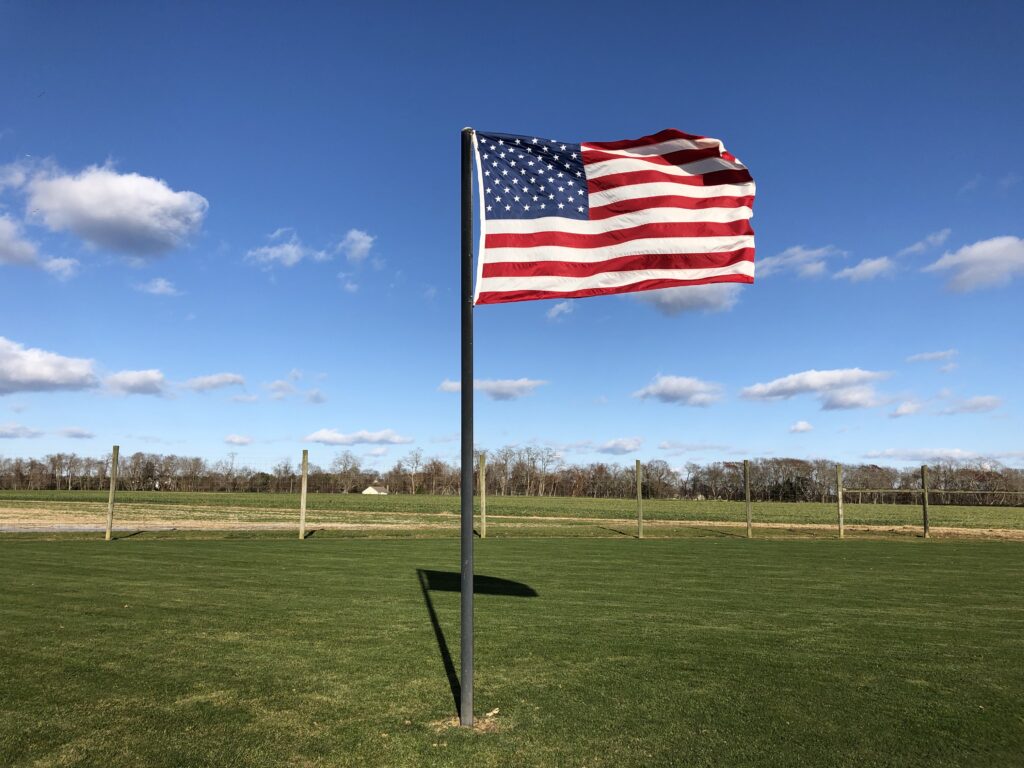
I’d like to thank all the student journalists with whom I have the pleasure of working. In the next weeks and months ahead, they will become ever more important in chronicling their colleges’ decisions for the fall and beyond. Support their work by reading it.
My best to all for good health.
Like what you see? Don’t like what you see? Want to see more of something? Want to see less of something? Let me know in the comments. And don’t forget to subscribe to the weekly newsletter!
For more instant updates, follow me on Twitter @bhrenton.

